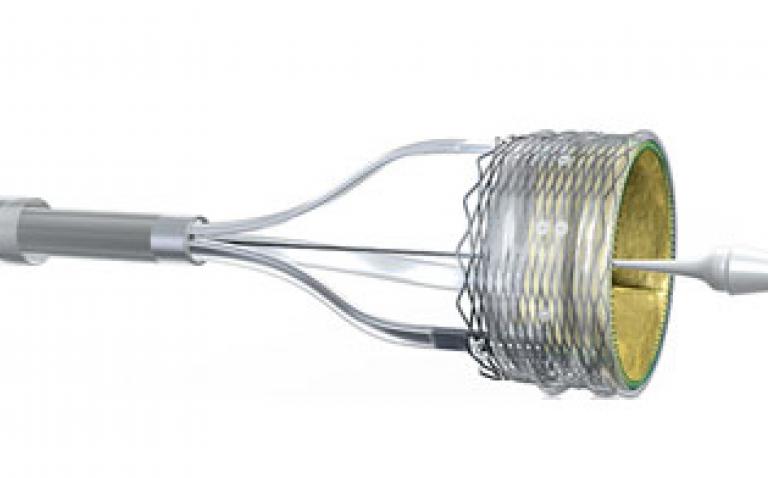Boston Scientific Corporation (NYSE: BSX) has received the CE Mark and begun the European commercial launch of its 25mm Lotus™ Transcatheter Aortic Valve Implantation (TAVI) System, complementing the currently available 23mm and 27mm valve sizes.
“Having the 25mm size allows us to be more precise in selecting the appropriate valve, which we anticipate will further improve outcomes for our patients,” said Dr Nicolas Van Mieghem at Erasmus Medical Center, Rotterdam, The Netherlands.
Prior to full commercialisation, a limited market evaluation of the 25mm valve Lotus Valve System was performed in select hospitals across Europe and Australia. Feedback on the valve performance was favourable from all implanting physicians.
“We have seen great results in the patients we have treated with the 25mm Lotus Valve System,” said Dr. Sabine Bleiziffer from the German Heart Centre in Munich, Germany. “What I really like about the Lotus valve is that it provides a high level of precision during implantation, allowing me to feel in control. We look forward to treating more patients with this valve.”
“The Lotus valve design helps simplify the procedure with the ability to assess valve functionality before release,” said Prof Dr Peter Wenaweser from the Inselspital in Bern, Switzerland. “Adding a 25mm valve makes sizing and valve selection even more precise.”
Six-month outcomes of the REPRISE II clinical study were presented in May at EuroPCR in Paris. REPRISE II is evaluating the Lotus Valve System in symptomatic patients with severe aortic valve stenosis considered at high risk for surgical valve replacement. The study demonstrated that the Lotus Valve System delivered sustained safety and effectiveness outcomes out to six months, with only 1.1% of patients having moderate paravalvular aortic regurgitation as assessed by an independent core laboratory. No severe cases occurred.
“We believe the addition of the 25mm valve size will offer our Lotus users an important treatment option for patients with severe aortic valve disease,” said Tom Fleming, vice president and general manager, Structural Heart, Boston Scientific. “Commercialising the 25mm valve only seven months after our initial launch of the Lotus Valve System demonstrates our commitment to advancing therapies and improving patient outcomes.”
About the Lotus Valve System
The Lotus Valve System offers a unique and effective alternative treatment for patients with severe aortic stenosis at high risk of conventional surgical valve replacement. It is a differentiated second-generation TAVI technology, consisting of a pre-loaded, stent-mounted tissue valve prosthesis and catheter delivery system for guidance and percutaneous placement of the valve. The low-profile delivery system and introducer sheath are designed to enable predictable and precise placement associated with early valve function, as well as bi-directional atraumatic repositioning and retrieval at any time prior to release of the aortic valve implant. Rapid pacing is not required. The device also features a unique Adaptive Seal designed to minimise the incidence of paravalvular regurgitation, which has proven to be a predictor of mortality.(1–3) The Lotus Valve System has CE Mark approval and is available for sale in CE Mark countries. In the US, the Lotus Valve System is not available for sale.
About Aortic Valve Disease
Aortic valve disease results in dysfunction of the aortic valve, one of the four valves that control the flow of blood in and out of the heart. Aortic valve stenosis is the process of thickening and stiffening in the valve, which can result in an abnormal narrowing of the aortic valve opening and reduction in blood flow. Aortic stenosis is a common problem affecting approximately 3% of the population over the age of 65 and 5% of people older than 75. From the onset of symptomatic aortic stenosis, the average survival rate is 50% at two years and 20% at five years.
References
- Kodali SK, et. al. Two-Year Outcomes after Transcatheter or Surgical Aortic-Valve Replacement. NEJM 2012;366:1685, http://www.nejm.org/doi/full/10.1056/NEJMoa1200384 (Accessed: April 25, 2013)
- Tamburino C, et. al. Valvular Heart Disease. Circ 2011;123:299, http://circ.ahajournals.org/content/123/3/299.full (Accessed: April 25, 2013)
- Abdel-Wahab M et. al. Aortic regurgitation after transcatheter aortic valve implantation: incidence and early outcome. Results from the German transcatheter aortic valve implantation registry. Heart 2011;97:899, http://circ.ahajournals.org/content/123/3/299.full (Accessed: April 25, 2013)










